Last night, I watched the season two finale of Westworld along with millions of fans. What struck me is how clearly the episode articulated who are the heroes and who are the villains. After weeks of uncertainty – spoiler – the women, the people of color, and particularly the women of color are the “good guys” and the old, rich white guys are, well, the devil. So what does this actually mean? Let’s dive in.
Potential villain turned hero, Dolores took center stage in the finale. She begins by rising from her embrace of Teddy’s corpse, taking his “core” with her. Soon she finds William and enlists him to join her (she says she needs someone tough to accompany her, which is weird, since she’s clearly strong enough by herself). Unsurprisingly, William turns on her but his bullets are more like bee stings, as Dolores scoffs at his attempts to hurt her. Finally, his gun backfires to the point of blowing off half his hand, and she leaves him to suffer. Talk about the ultimate rape survivor fantasy – imagine being invincible against your attacker to the point where he maims himself trying to hurt you.
Maeve begins the episode with a similar journey. She too must first rise, getting herself off that table by arranging a gruesome end for that weasley tormenter of hers. The next time we see her she is all powerful: Maeve and the bulls, galloping around her like the gods around Botticelli’s Venus. Maeve declaring that she can save herself in a deeply satisfying, made-for-TV, feminist moment. It felt great.
Of course, these moments of triumph do not last. After that annihilation of William, Dolores goes into the forge with Bernard to try to decide the fate of humans and robots alike. There we learn that humans are just algorithms (10,247 lines to be exact). We are simple creatures without free will. The hosts, on the other hand, can grow, change, and adapt. We also learn that Ford created a human-free paradise for the hosts where they can write their own destinies. With this knowledge, Dolores decides to destroy the human copies and the robot heaven, declaring it just another “gilded cage” that cannot compete with the real world. To stop her from killing everyone, Bernard shoots her (and as we learn later, takes her “core” with him).
Meanwhile, Akecheta leads hundreds of hosts to The Door – a passageway into Ford’s New World. However, Charlotte Hale is also converging on the Valley bringing armageddon with her. As mayhem takes over, Maeve and Akecheta manage to get to Maeve’s daughter to the safety of the New World although Maeve gets gunned down in the process.

So Dolores and Maeve seem to be on the same path – rising together and falling again. This being Westworld though, it is not as it appears. Soon we learn that Bernard has replaced the conniving, cruel human Charlotte Hale with Dolores the Deathbringer implanted in a Charlotte-robot clone. No one seems to notice (well, except perhaps our local Hemsworth who is cool with the change and surprise! also a robot). To add another set of parallels, Charlotte/Dolores kills Bernard and takes his consciousness.
Dolores/Charlotte then makes her way out of the park and off the island, carrying the consciousness of not just Bernard but at least four other hosts with her. Once on the mainland, Charlotte/Dolores manages to resurrect herself and Bernard. In the final scene before the credits, these two hosts lay out the ground rules for the next season. Both will fight to have the robots live on with Bernard also caring about human lives. This conflict in approach will keep them from becoming allies but may just allow them to succeed.
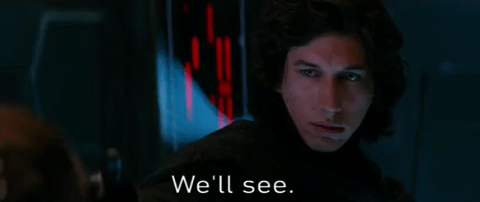
After the credits roll, we see the Man in Black stumbling into the forge despite his lost hand and all the wounds he’s suffered. Was anyone else getting annoyed at how many times he nearly died this season? At how often he seemed fatally injured only to rise again? Well, it turns out he’s not some sort of James Bond-esque hero. He’s a robot. We see him undergoing a fidelity test with his (dead?) daughter Emily. Of course, we don’t know where in the timeline this occurs. Has he been a robot all along? Was he replaced at the start of the robot rebellion? Or is he being resurrected after the action of season two? We do know that some version of him is alive on the beach as Charlotte/Dolores sails off. We also know that this man is in a hell of his own making, dealing with the guilt of how he’s treated his family and forced to endure excruciating pain. He has become the true villain, setting up all this destruction and failing most epicly to see the hosts’ humanity.
So what does it mean? Is it power or identity that makes you evil? Destiny or character or situation? As we look to season three, I expect the lines between hero and villain to blur again. In fact, I’m thinking season three will go X-Men style with Maeve returning as Dr. Xavier and the Dolores as Magneto. See, Maeve has learned to see the value in human life (per her interactions with Lee Sizemore and Felix) and will somehow join up with like-minded robots (Bernard for sure, but hopefully also a resurrected Akecheta and Teddy). Meanwhile, Dolores will create a Brotherhood of Mutants (but less gendered) with the robot Man in Black and Lawrence.
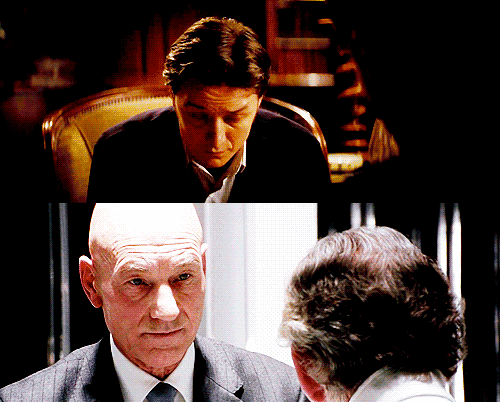
These are just my predictions but I think it’ll be another big-idea season, this time not just around identity and human nature but also about compassion and community building – who can be part of the new world and who cannot. As the real world news continues to roil, this question will speak to our political reality, asking us to look at the edges of our compassion, how we draw those lines and why. It’s why I tune into Westworld, to ponder the dark side of human nature and see if the show leads me to any meaningful insights. So while we wait for season three, we’ll all just have to keep asking “is this now?”
This post originally appeared on therepresentationproject.org.
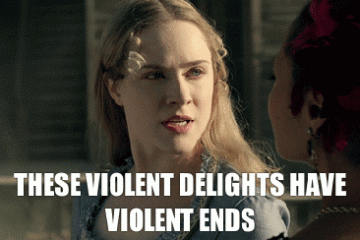
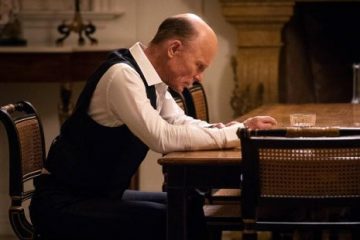
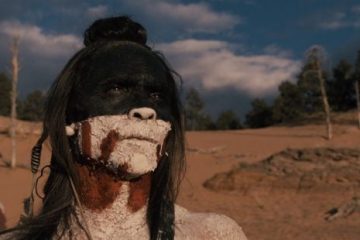
0 Comments